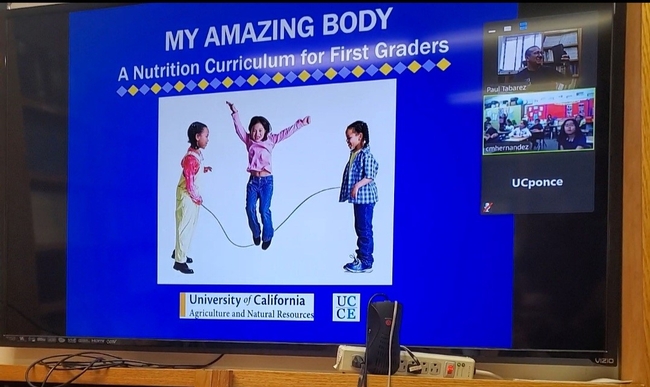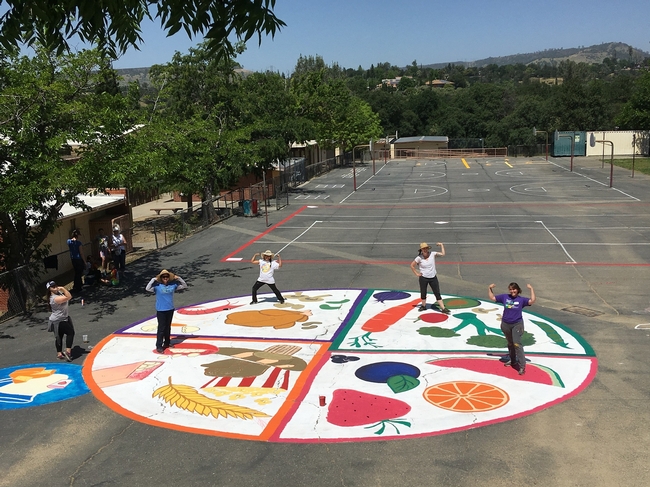Nutrition educators pivot to meet California’s needs during pandemic
CalFresh Healthy Living, UC and its UC Cooperative Extension community educators work in schools and community settings to give low-income children and families the opportunities and resources they need to eat right, stay active and lead healthy lives.
As California's unemployment rate rises due to COVID-19, their efforts have never been more important, nor more challenging, but how do you provide in-person services during a pandemic?
“We pivot,” said Kamaljeet Khaira, director of CalFresh Healthy Living, UC. “To meet the new remote learning needs of schools and communities, we shifted our nutrition, physical activity and garden-based education interventions to online platforms. We are transforming the delivery method of 19 different curricula.”
CalFresh Healthy Living, UC is based at UC Davis in the College of Agricultural and Environmental Sciences. It is one of four California agencies funded by the U.S. Department of Agriculture to provide educational services to low-income Californians eligible for the Supplemental Nutrition Assistance Program (SNAP), formerly known as food stamps. It is the largest nutrition education program in the nation.
Local offices of CalFresh Healthy Living, UC are part of UC Agriculture and Natural Resources' Cooperative Extension network. CalFresh Healthy Living, UC administers the program in 32 counties through local offices that provide evidence-based, nutrition programs combined with physical activity and policy, systems and environmental change initiatives. Led by educators, volunteers, nonprofit organizations and state and local agencies, the services are comprehensive in nature to stimulate sustainable change.
Before COVID-19, that meant meeting at schools and with families and adults, educating and inspiring them to reach for fresh produce and other nutritional foods. With the help of teachers, CalFresh Healthy Living, UC brought nutrition education to the classroom and encouraged schools to develop “smart” lunchrooms that put fresh food and beverages front and center. They spearheaded community and school-based gardens where children and parents worked together to plant, harvest and prepare nutritious meals. They also offered training in physical activity through the Coordinated Approach to Child Health (CATCH) curricula, such as creating playground stencils to help students build a foundation for a lifetime of active living.
“When you start early, children get accustomed to physical activity, as well as food and drinks with less sodium and sugar, and this has the potential to initiate a lifetime of healthy choices,” said Andra Nicoli, strategic initiatives program and policy analyst with CalFresh Healthy Living, UC. “We try to surround children in an environment of healthy living. There are many spokes on the wheel to improving a child's health, and we work to address them.”
Starting this fall, CalFresh Healthy Living, UC will switch to a hybrid approach to learning. When they can meet in person with participants using masks and social distancing, they will. In addition, much of their training will be available online to those in California who are SNAP-eligible. This requires looking at program delivery and collecting feedback for continuous quality improvement in a new way.
“We're designing online curricula delivery models to re-engage students using a fresh approach, like offering interactive physical activity breaks and mindful moments with instructive audio-visuals,” said Tammy McMurdo, who leads curricula and direct education for CalFresh Healthy Living, UC. “Bringing online content right into students' homes makes it available to parents, grandparents and everyone living there, which is important to sustaining healthy eating practices.”
Some examples of new remote learning include:
- More than 60 online lessons are under development for children prekindergarten through eighth grade that emphasize healthy eating, active living and gardening. For example, in Imperial County, CalFresh Healthy Living, UCCE collaborated with Carmen Hernandez, a third- and fourth-grade teacher at De Anza Magnet Elementary School, to pilot a 30-minute remote lesson of My Amazing Body that includes book reading, an interactive PowerPoint, a physical activity break, and a lesson discussion via Zoom. “It was something different and the students were engaged,” Hernandez said. “We really enjoyed it!”
- CalFresh Healthy Living, UCCE county programs are developing the online delivery of five adult curricula, including the UC-developed Plan, Shop, Save and Cook and Making Every Dollar Count that provide food resource management tips, as well as ideas for how to stay active and feed your family healthy food on a limited budget. These lessons are particularly valuable at this time of high unemployment.
“We're finding new ways to connect and engage with the children and families of California,” Khaira explained. “Along with our many partners, we continue to strive for a California where everyone is nourished, active and healthy.”
You can learn more about CalFresh Healthy Living programs at http://calfresh.dss.ca.gov/healthyliving/home.


